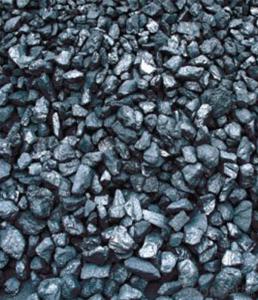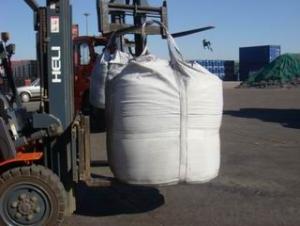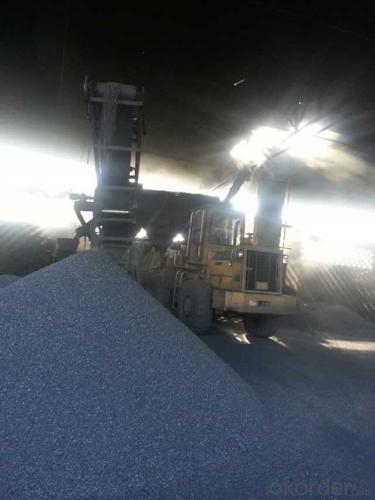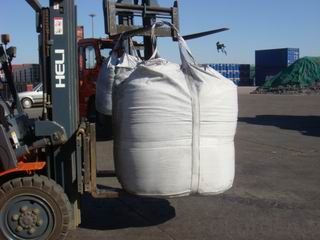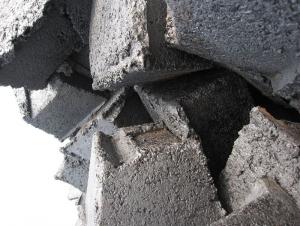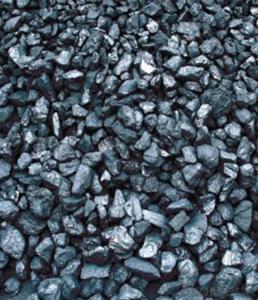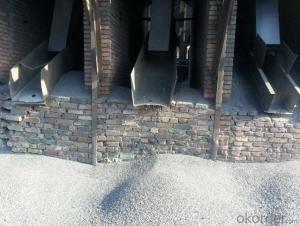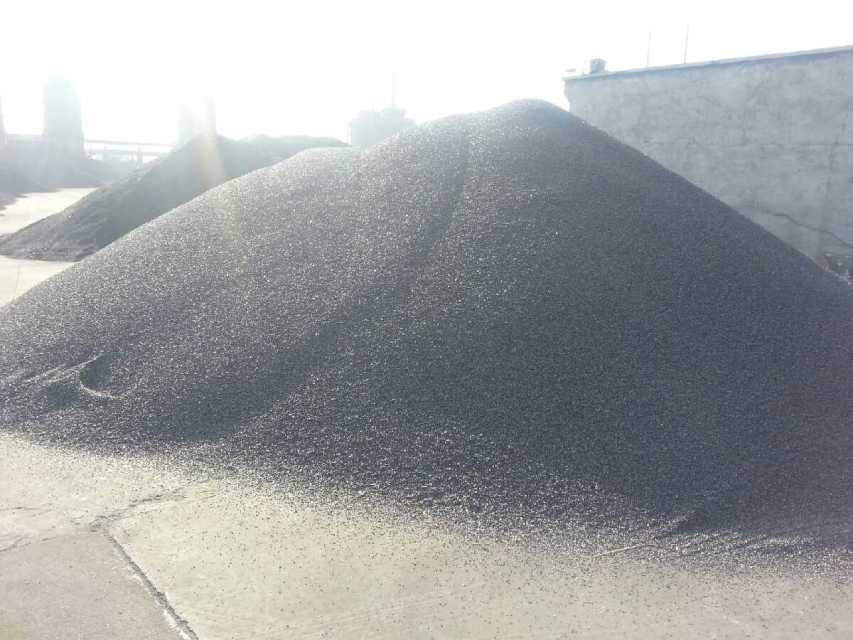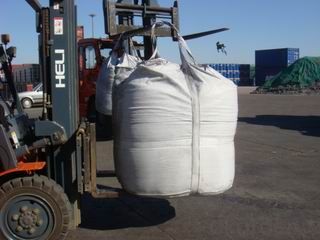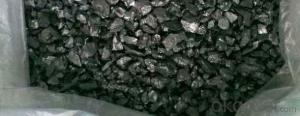FC 90% GAS Calcined Anthracite Sells Good in Middle East
- Loading Port:
- China Main Port
- Payment Terms:
- TT OR LC
- Min Order Qty:
- -
- Supply Capability:
- -
OKorder Service Pledge
Quality Product, Order Online Tracking, Timely Delivery
OKorder Financial Service
Credit Rating, Credit Services, Credit Purchasing
You Might Also Like
Specifications
Calcined Anthracite
Fixed carbon: 90%
S: 0.5% max
Size: 0-3. 3-5.3-15 or as request
- Q: What is the role of carbon in the formation of diamonds?
- The creation of diamonds heavily relies on carbon, as it is the sole element accountable for their existence. Diamonds are generated in the deep recesses of the Earth's mantle, amidst extreme temperature and pressure. When carbon atoms face immense heat and pressure, they undergo a process called graphitization, which entails rearranging their atomic composition and transitioning into a crystal lattice structure, ultimately leading to the formation of diamonds. The process commences with carbon-rich materials, such as organic matter or carbon-bearing minerals, encountering the intense heat and pressure prevalent in the Earth's mantle, generally at depths ranging from 150 to 200 kilometers. In such circumstances, the carbon atoms within these materials are compelled to bond in a distinctive manner, producing the rigid, three-dimensional lattice structure that characterizes diamonds. The formation of diamonds necessitates specific geological conditions, namely temperatures surpassing 900 degrees Celsius and pressures surpassing 725,000 pounds per square inch (50,000 atmospheres). These extreme conditions are typically present in regions where ancient tectonic plates collide or during volcanic eruptions that bring diamonds to the Earth's surface. The ability of carbon to form robust covalent bonds with other carbon atoms is what facilitates the transformation into diamonds. Each carbon atom establishes four sturdy covalent bonds, giving rise to a tetrahedral structure. This formidable bonding empowers diamonds with exceptional hardness, rendering them one of the toughest substances known to humanity. To sum up, carbon plays a vital part in the formation of diamonds, undergoing graphitization amid immense temperature and pressure to create the distinct crystal lattice structure that grants diamonds their extraordinary properties. Without carbon, the creation of diamonds as we presently comprehend them would be unattainable.
- Q: How is carbon used in the production of diamonds?
- Carbon is used in the production of diamonds through a process called high-pressure high-temperature (HPHT) synthesis. In this method, pure carbon is subjected to extremely high pressures and temperatures, replicating the conditions found deep within the Earth's mantle where natural diamonds form. By applying these conditions, carbon atoms rearrange and bond together, resulting in the formation of synthetic diamonds.
- Q: Why is carbon content of stainless steel low?
- The corrosion resistance of stainless steel decreases with the increase of carbon content. Therefore, the carbon content of most stainless steel is lower, the maximum is not more than 1.2%, and some steel's Omega C (carbon content) is even less than 0.03% (such as 00Cr12). The main alloying element in stainless steel is Cr (chromium), and the steel has corrosion resistance only when the Cr content reaches a certain value. Therefore, stainless steel in general Cr (chromium) content of at least 10.5%. Stainless steel also contains Ni, Ti, Mn, N, Nb, Mo, Si, Cu and other elements.
- Q: What is carbon nanosensor?
- Utilizing carbon-based materials at the nanoscale, a carbon nanosensor is designed to detect and measure various substances or physical properties. These sensors possess a high sensitivity and are incredibly small, enabling them to detect even the tiniest amounts of target molecules or changes in their surroundings. By functionalizing the surface of the carbon nanomaterials with specific receptors or probes, carbon nanosensors can be tailored to target specific molecules or properties. Furthermore, integration with other technologies, like electronics, allows for real-time monitoring and data analysis. Carbon nanomaterials possess unique properties, such as high surface area, electrical conductivity, and chemical stability, that render them perfect for constructing versatile and sensitive sensors applicable in a wide range of fields, including environmental monitoring, medical diagnostics, and food safety.
- Q: Benefits of reducing carbon emissions
- The researchers then extracted 4 ice ages from 500 to 140 thousand years from Greenland, which resulted in the discovery of TOMV virus in the ice. Researchers say the surface of the virus is surrounded by solid proteins, so it can survive in adversity.The new findings that researchers believe that a series of influenza, polio and smallpox epidemic virus may be hidden in the depths of the ice, the human of the original virus had no ability to resist, when global temperatures rise to ice melting, the ice buried virus in the thousand or more may be raised, forming the epidemic. The scientists said, although they do not know the survival of the virus of hope, or the opportunity to re adapt to the ground environment, but the possibility certainly can not deny the virus back.
- Q: How can I see if a battery can be used to recharge it?Can not all carbon batteries charge?
- Maybe you'll ask why you don't unify the voltages of these batteries to 1.5V, you know, from the raw batteries we learned in high schoolThe battery positive electrode and the negative electrode potential (i.e. voltage) is determined by a positive electrode and a negative electrode material and whether the charge is determined by using the different electrolyte electrolyte battery two materials also need to be adjusted accordingly
- Q: What are the impacts of carbon emissions on the stability of coastal areas?
- Carbon emissions have significant impacts on the stability of coastal areas. The primary consequence is the acceleration of global warming, leading to rising sea levels and increased frequency and intensity of coastal storms. This combination results in erosion, coastal flooding, and loss of land, endangering ecosystems, infrastructure, and human settlements. Additionally, carbon emissions contribute to ocean acidification, harming marine life and disrupting delicate coastal ecosystems. Therefore, reducing carbon emissions is crucial to mitigate these adverse effects and ensure the long-term stability of coastal areas.
- Q: What is carbon coffee fiber?
- Its main functions are bacteriostasis, deodorization, divergence of negative ions and anti ultraviolet rays.
- Q: What is the role of carbon in photosynthesis?
- The essential role of carbon in photosynthesis cannot be overstated. Carbon dioxide, a primary reactant in the photosynthesis process, combines with water and sunlight energy to produce glucose, which serves as the main source of energy for plant growth and development. To enter the leaf, carbon dioxide utilizes tiny pores known as stomata, diffusing into the chloroplasts where photosynthesis occurs. Within the chloroplasts, carbon dioxide interacts with water, sunlight, and chlorophyll, resulting in a series of chemical reactions called the Calvin cycle or dark reactions. During this cycle, glucose is synthesized and stored as a vital energy source for plants. The carbon atoms in carbon dioxide act as the foundation for glucose and other organic compounds produced during photosynthesis. Through a complex sequence of enzymatic reactions, carbon dioxide is transformed into carbohydrates, lipids, proteins, and nucleic acids, all of which are necessary for plant growth and survival. Moreover, photosynthesis plays a significant role in the global carbon cycle, not only producing glucose but also regulating the levels of carbon dioxide in the atmosphere and releasing oxygen as a byproduct. This process helps mitigate climate change and maintains the necessary balance of oxygen for all living organisms. In essence, carbon's role in photosynthesis is pivotal, serving as the raw material for glucose synthesis and other organic compounds. Through this process, plants convert carbon dioxide into energy-rich molecules, contributing to their survival, growth, and the overall equilibrium of carbon in the Earth's atmosphere.
- Q: How is carbon used in the production of carbon fiber?
- Carbon is a crucial component in the production of carbon fiber. Carbon fibers are made by subjecting a precursor material, usually a type of polymer such as polyacrylonitrile (PAN) or rayon, to a series of heating and chemical treatments. The precursor material is first heated to a high temperature in the absence of oxygen, a process known as carbonization. During this stage, the precursor undergoes pyrolysis, which breaks down the molecular structure and removes non-carbon elements like hydrogen, oxygen, and nitrogen. After carbonization, the resulting material is a carbon-rich structure known as a carbonized fiber or char. However, the material is still not considered carbon fiber at this point. To transform the char into carbon fibers, it undergoes further processing steps called stabilization and graphitization. During stabilization, the char is heated in the presence of oxygen, which leads to the formation of cross-linked structures. This step helps to improve the fiber's thermal stability and prevents it from shrinking or deforming during subsequent processing. The stabilized material is then heated to a higher temperature in an inert atmosphere during graphitization. This process aligns the carbon atoms within the fiber, creating a highly ordered and crystalline structure. Throughout this entire process, carbon is the main building block of the resulting carbon fiber. Starting from the precursor material, which contains carbon atoms, the carbonization and graphitization steps remove impurities and rearrange the carbon atoms to form a strong and lightweight fiber. The resulting carbon fiber exhibits exceptional properties such as high strength-to-weight ratio, stiffness, and resistance to heat and chemicals, making it a valuable material in various industries, including aerospace, automotive, and sporting goods.
Send your message to us
FC 90% GAS Calcined Anthracite Sells Good in Middle East
- Loading Port:
- China Main Port
- Payment Terms:
- TT OR LC
- Min Order Qty:
- -
- Supply Capability:
- -
OKorder Service Pledge
Quality Product, Order Online Tracking, Timely Delivery
OKorder Financial Service
Credit Rating, Credit Services, Credit Purchasing
Similar products
Hot products
Hot Searches

